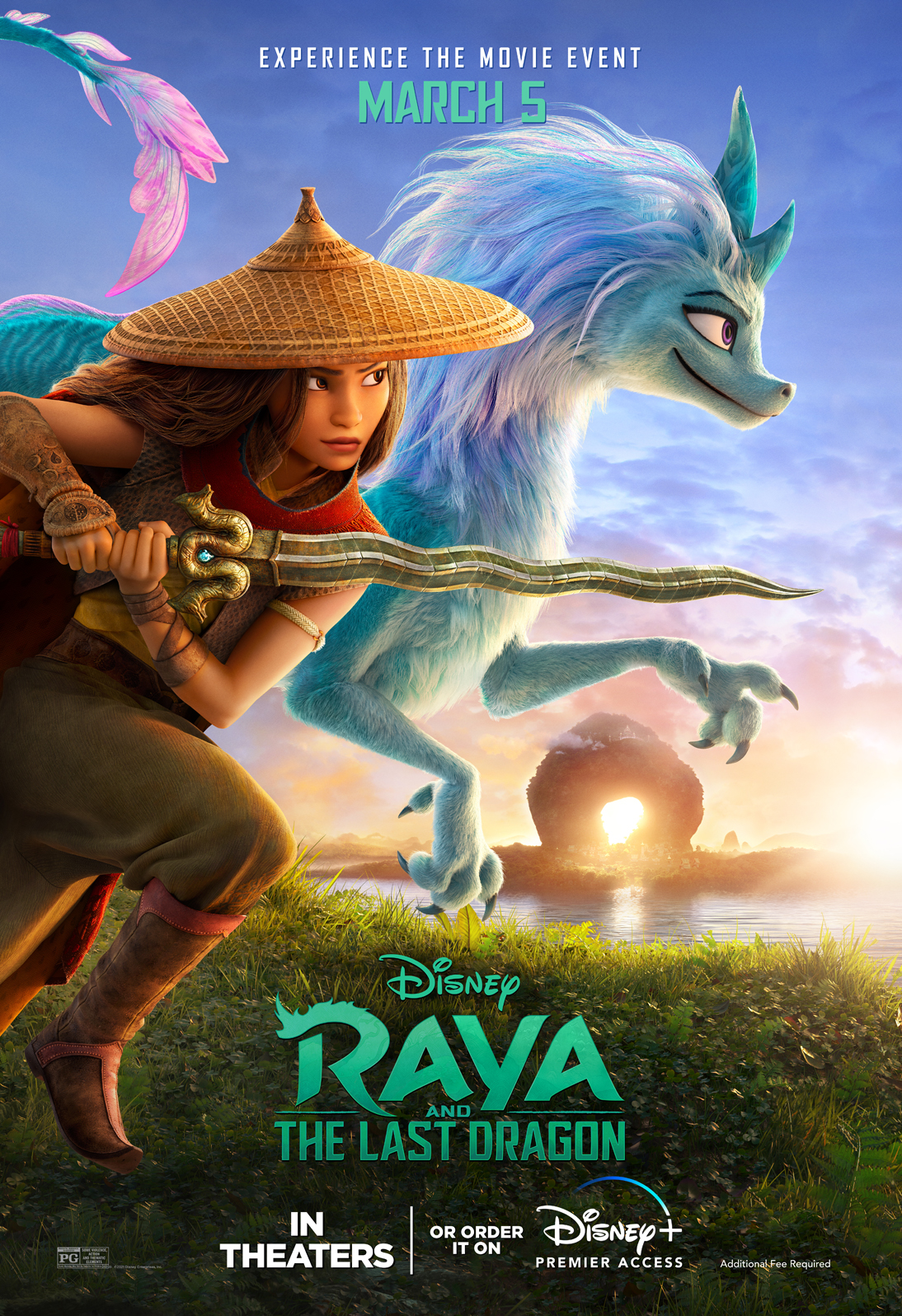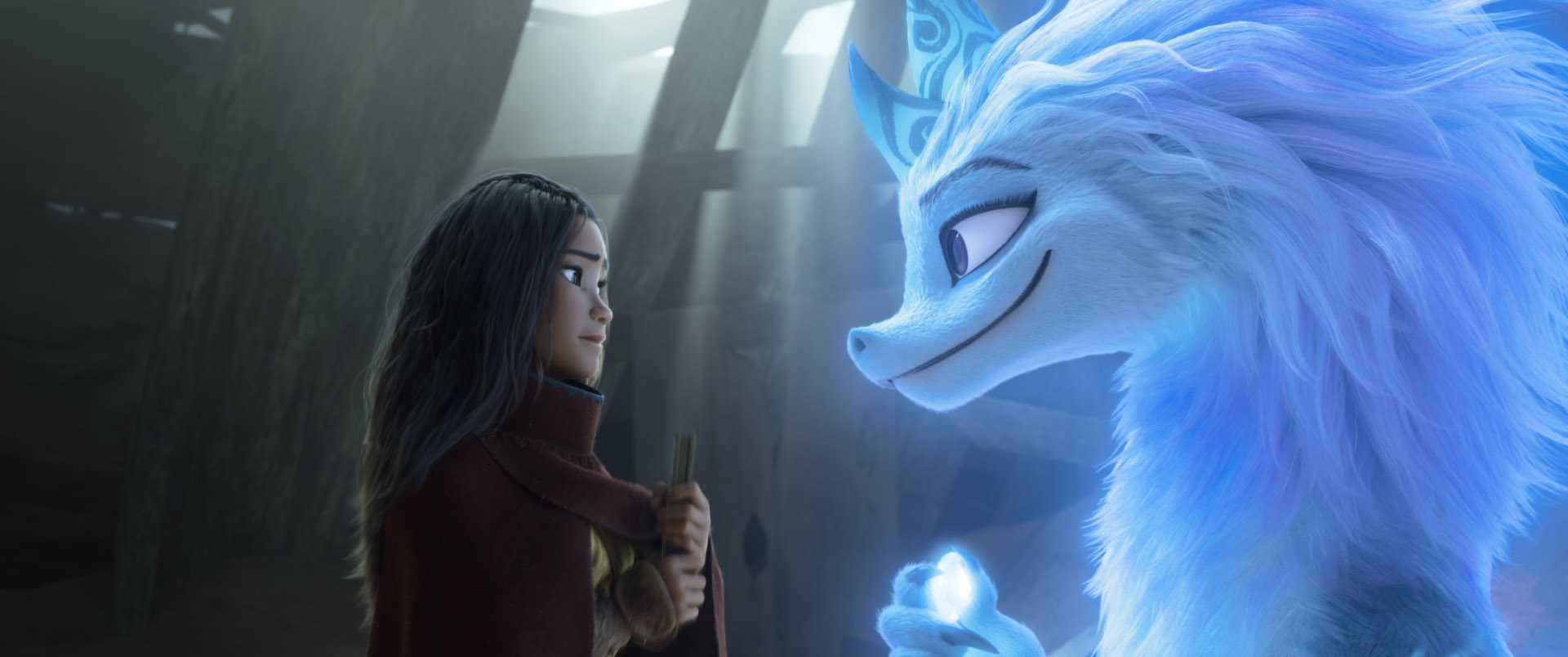
Arnis fighting sticks, Moro swords, wearing salakot (cone-shaped hats) — these are some of the touches of Filipino culture in “Raya and the Last Dragon,” Disney’s forthcoming animated film that will be the studio’s first with a Southeast Asian warrior princess.
Southeast Asian nations from the Philippines to Vietnam come together to create the fantasy world of Kumandra, where Raya (voiced by Kelly Marie Tran) is on a quest to find the mythical last dragon and save humanity from evil forces.

Whether it’s the environment or details on clothing, the elements were based on trips the production team, led by directors Don Hall and Carlos López Estrada, took to several countries in the region.
Getting into the role of Raya felt natural for Tran, a Vietnamese American actress who becomes the first Southeast Asian to lead a Disney animated film. Along with Adele Lim (“Crazy Rich Asians”), Qui Nguyen served as a co-writer who was “specific about having Southeast Asian culture be represented in a way that was authentic,” Tran said.
“I think you can see inspiration from that part of the world in the terrain and in the shapes in the movie and in the fabrics that people are wearing and the colors are used,” Tran, who is known for her work in “Star Wars: The Last Jedi” said during a recent press roundtable via Zoom. “I really do believe that Disney is very meticulous about wanting to accurately represent the parts of the world that their movies are about.”
Apart from the cultural similarities, Tran resonated with Raya being a lone warrior and strong in her convictions.
“I think something that really help[ed] me was really honing in on like what is happening specifically in the scene for this character,” she said. “That’s what I do with all my work — really try to find the ways in which I have a commonality with my character and find that way in and then from there, piecing things together.”

Early in the film (no spoilers!), Raya, like many protagonists before her, faces hardship that characterizes why she is guarded from others, but along the way, she learns to open up and see that the world can be changed for the better.
“[Raya] is so unafraid to stand up for herself and what she believes in and to sort of give up everything in order fight for this beautiful vision of what she believes the world can be,” Tran said.
In the barrier-breaking piece of “Raya” introducing Southeast Asian culture and taking a step in terms of representation, Tran said there shouldn’t be so much pressure on having to carry this moment of firsts.
“I think that there should be a wealth of representation for every type of person from every part of world, every socioeconomic class, every ability, every sexual orientation and you know, every religion,” she said. “I would love if representation was further than where we are because then we wouldn’t have to feel this pressure every time something like this is being made because… it’s not fair to have to feel that.”
Key roles are played by actors of East Asian descent: Sisu, the blue dragon accompanying Raya on her mission, is voiced by Awkwafina; Daniel Dae Kim plays Raya’s father Benja; Gemma Chan lends her voice to Raya’s nemesis Namaari; and Sandra Oh voices Virana, Namaari’s mother.
Cassie Steele, a Filipina-Canadian actress, was initially announced to voice the titular role at the 2019 D23 Expo but was replaced by Tran, who brings Raya to life and relatability. Though Steele’s participation could have been a stride for the global Filipino community, various internet users nonetheless clung to the instances of their culture teased in the trailer.
As a Filipina-American, I am heavily emotional over this trailer for Raya and The Last Dragon.
I am so proud of this representation.
Using Arnis, wearing the salakot, holding the Moro sword… the different colors on their people. I’m crying.
I am so proud. pic.twitter.com/Az0ILSNf65
— IVYvision. ✨ (@sincerelyivy) October 21, 2020
“As a Filipina-American, I am heavily emotional over this trailer for Raya and The Last Dragon. I am so proud of this representation. Using Arnis, wearing the salakot, holding the Moro sword… the different colors on their people. I’m crying. I am so proud,” one Fil-Am viewer wrote on Twitter.
It’s SO cool to see Filipino cultural references in Raya and the Last Dragon, I love seeing something represented from my own culture with a brand I love like Disney. Also the diversity in the cast?? They LOOK like my own family, its beautiful SE asian representation so far.
— Nipah ? (@NipahDUBS) October 21, 2020
“It’s SO cool to see Filipino cultural references in Raya and the Last Dragon, I love seeing something represented from my own culture with a brand I love like Disney. Also the diversity in the cast?? They LOOK like my own family, its beautiful SE asian representation so far,” a user wrote on Twitter.
*scream noises because i see Raya using the filipino martial art arnis and wearing a sakalot and holding the moro sword* IM SO HYPED BECAUSE THE REP- the v/as are east asian though for some reason despite this movie being inspired by SEA but anyways still EXCITED https://t.co/K0abIeUBpT
— ?? Ven ?? (Ducktales spoilers) (@Infamousquacku) January 27, 2021
“*scream noises because i see Raya using the filipino martial art arnis and wearing a sakalot and holding the moro sword* IM SO HYPED BECAUSE THE REP- the v/as are east asian though for some reason despite this movie being inspired by SEA but anyways still EXCITED,” another individual said.
But whether you are of Asian descent or want to learn more about the Southeast Asian region and its cultures, Tran said, there is “something for everyone.”
“I want audiences to take away the idea that we are human beings who exist who have important stories to tell and our stories are worth telling. It feels like that to me is common sense…I feel really grateful that we’re part of a movie that is honoring this part of the world,” Tran said. “What’s going to be really cool about it is when people recognize that the messages and characters, and the ability to relate to these characters, is a universal thing.”
In addition to the strides of representation, “Raya and the Last Dragon” is Disney’s first entirely made from home when production, which began when the pandemic hit, was forced to move remotely. Behind the scenes, voice actors set up recording booths at their homes, while animators and other crew members set up computer stations in their living rooms.
“One thing that was sad about it was that we couldn’t be together…[But] I really feel like we all were just feeling pretty lucky to be part of something bigger than us during this time,” Tran said.
“Raya and the Last Dragon” is set to release on March 5 in theaters and on Disney+ with Premiere Access for an additional $29.99 fee.









